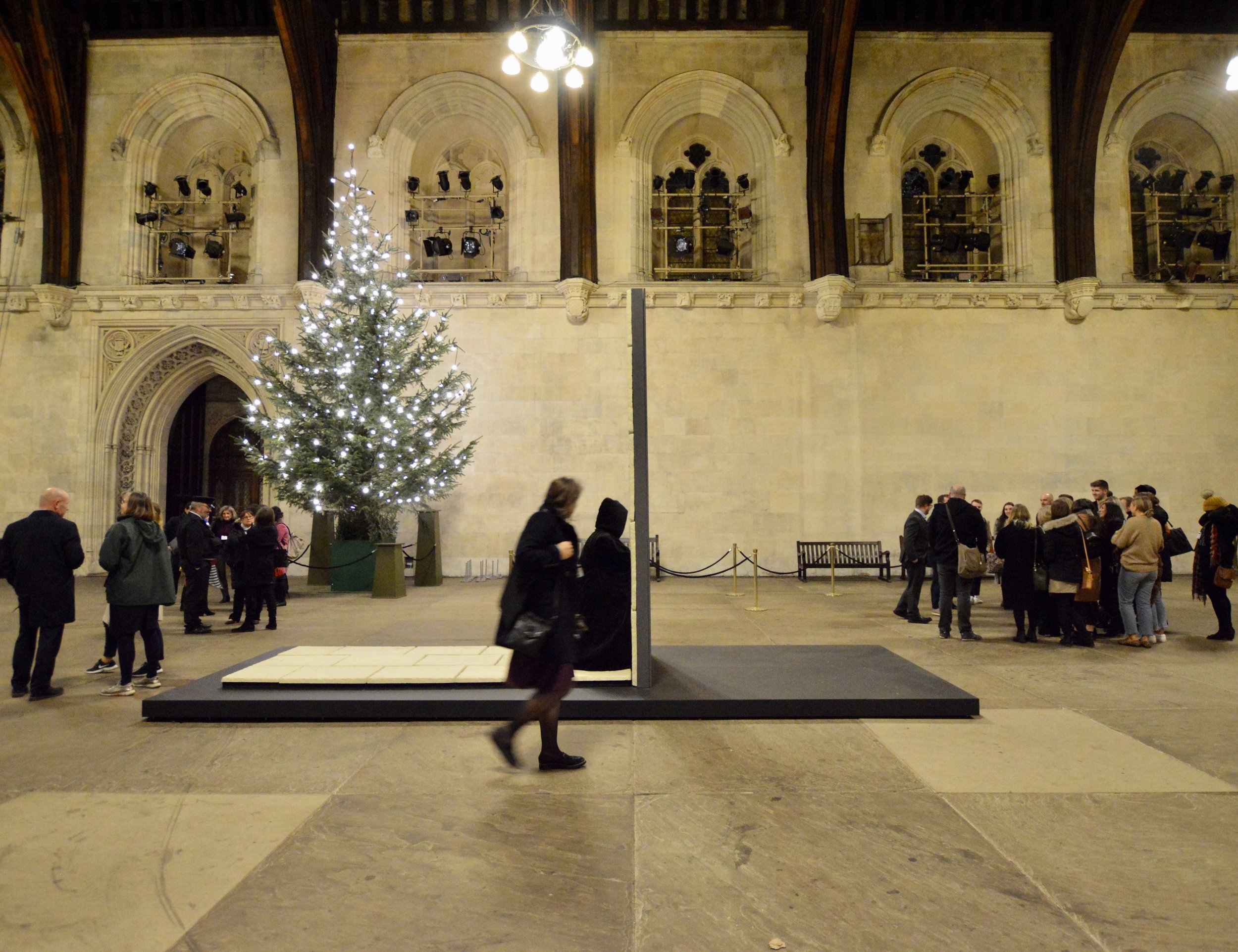In 2018, House of Doors was installed at the heart of UK Parliament; Westminster Hall, to commemorate the 100th anniversary of the Representation of the People Act 1918.
this act granted the vote to women over the age of 30 who met a property qualification. The same Act gave the vote to all men over the age of 21.
A series of associated, participatory events ran alongside the month long installation.
















““I was visiting Parliament for the first time – I was excited until the security checks – then I got really nervous and wanted to leave. I walked into Westminster Hall and the first thing I saw was the figure being swallowed by this rising floor. I thought, that’s me, that’s how I feel, I don’t belong here. But somehow seeing that right in the middle of the hall made me feel better – like I had a friend, an ally, someone who got it.””
The placement of House of Doors in Westminster Hall marked both the 100th anniversary of the Representation of the People Act 1918 and the Parliament (Qualification of Women) Act, which first allowed select women to vote in and stand for election.
Westminster Hall, as the historic entrance to the Houses of Parliament, represents the history of British democracy and the political obstacles which women had to overcome in the early 20th century. Whilst creating House of Doors, Kristina Clackson Bonnington was granted permission to observe both houses and committees in session, and to take detailed rubbings of the Medieval York stone paving in Westminster Hall. The paving of the hall was specifically selected as representative of the political sphere which women fought for access to. The rubbings made were used to create the 28 cast paving stones, which together form the stone door; a white monolith which is simultaneously an obstacle, a path, and an opportunity.
The paved door, which stands at over three meters in height, makes tangible the historical and contemporary inaccessibility of public life for some. Both visitors and those working in Parliament were invited to consider how access to public life has changed since 1918, with particular emphasis on the spaces and roles that were closed to women and that have since opened up.
“Installing House of Doors at the centre of Parliament created an opportunity for all in Parliament to pause and reflect on the progress made and imagine how women’s access to space and public life may continue to become more equitable in the 21st century.”

